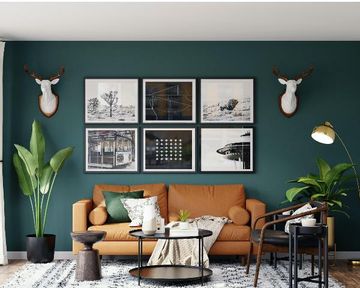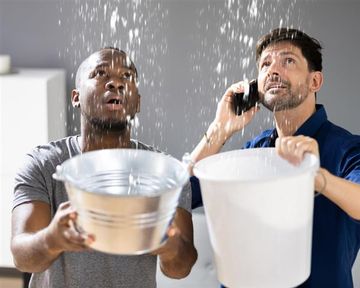7 Interesting Facts About Your Home You Probably Didn't Know
Most of us assume we know everything there is to know about our homes, especially if we’ve lived in them for some time, but whilst we may be familiar with the geyser’s location and how many square meters of living space we own, there are numerous things that most people would be very surprised to know.
So says Cobus Odendaal, CEO of Lew Geffen Sotheby’s International Realty in Johannesburg and Randburg, adding that there is more to a house than meets the eye.
“Homes have evolved over decades – even centuries – and most features were designed with a purpose in mind, even if we are no longer aware of the original intention and trends have also changed regularly which impacts not only our lifestyles but also our bank accounts.”
Below he lists seven interesting facts that you probably didn’t know – and would certainly serve as a great ice-breaker and easy conversation around the dinner table:
The strip between your lower cabinets and the floor serves a specific purpose.
In most kitchens, the lower cabinets are lifted and protrude slightly and it's not just aesthetic. This area is called a toe kick and it allows you to stand closer to the counter while you're cooking whilst also raising the doors of the cabinets off the ground so they can swing over your toes,
Furthermore, the toe kick can be used as a decorative element in the kitchen design - it can be finished with a matching material or a contrasting colour to create a striking visual element. Some homeowners also install lighting in the toe kick to create a unique ambiance in the kitchen.
Overall, the toe kick is an essential element of a well-designed kitchen that serves both functional and aesthetic purposes.
Your house doesn’t creak because it’s old
It’s also highly unlikely to be ghosts. Creaking sounds in a house are often caused by the movement of building materials, particularly wood, in response to changes in temperature and humidity. As wood expands or contracts, it can cause movement in other parts of the house, such as the subfloor or the framing of the walls.
Your brass door knobs help to keep you healthy
Doorknobs are a major source of germs and also areas we often overlook whilst cleaning but you don’t have to worry about that if you have brass or copper knobs in your house because they can naturally disinfect themselves every few hours.
Copper and brass both contain metal ions that are toxic to a wide range of microorganisms, including bacteria, viruses, and fungi and when these metals come into contact with microorganisms, they can disrupt the cell membranes and cause oxidative damage, which can ultimately lead to the death of the microbe.
Studies have shown that copper and brass surfaces can reduce the levels of harmful microorganisms on surfaces by up to 99.9% within just a few hours. This makes them a great choice for frequently touched surfaces, such as doorknobs, where germs can easily accumulate.
The cabinet under your sink isn't really for storage
Yip! The cabinet under the sink is not primarily designed for storage, but rather for accessing the plumbing fixtures located there. This is especially important in case of leaks or other plumbing issues that may require repair or maintenance. Having easy access to the plumbing under the sink allows homeowners or professional plumbers to quickly and easily address any issues that may arise.
While it's common for homeowners to use the space under the sink for storage, it's important to keep in mind that this can make it more difficult to access the plumbing fixtures if needed – especially in an emergency.
To ensure easy access, it's a good idea to keep the space under the sink relatively clear and organized, and to avoid storing items that may leak or spill, such as cleaning products or household chemicals.
Colours can affect the selling price of your home
Interesting fact. Research has shown that homes which have black or gray front doors tend to sell for higher prices, as do homes with different colored top and bottom kitchen cabinets whilst homes tend to sell for less if they’re painted yellow.
The gaps at the bottom of your brick house aren't holes that need to be filled in
They’re called "weep holes" and are actually an essential part of brick structures because between a home's exterior brick and the plywood beneath, there is an air gap that functions as a rain screen so any moisture that gets behind the brick drains down to the bottom of the wall and out through the weep holes.
Without weep holes, water can get trapped and cause damage to the structure over time and they also allow for ventilation, which can help prevent mould and mildew growth. It's important to ensure that weep holes remain unobstructed so that they can function properly.
Your home's double taps were intended to prevent illness
There's a specific reason for your sink having two taps. In older homes, the cold-water tap was traditionally linked to the local water supply, which had been treated and was safe to drink whilst the hot-water tap was connected to a tank stored in the homeowner's attic, which would often be contaminated by bugs, rats and random detritus and was therefore considered non-potable - and potentially hazardous.
By separating the hot and cold-water taps, homeowners could avoid accidentally consuming contaminated water and potentially becoming ill. However, in modern homes, it's more common to have a single tap that mixes hot and cold water to provide a consistent temperature for washing and cleaning.

